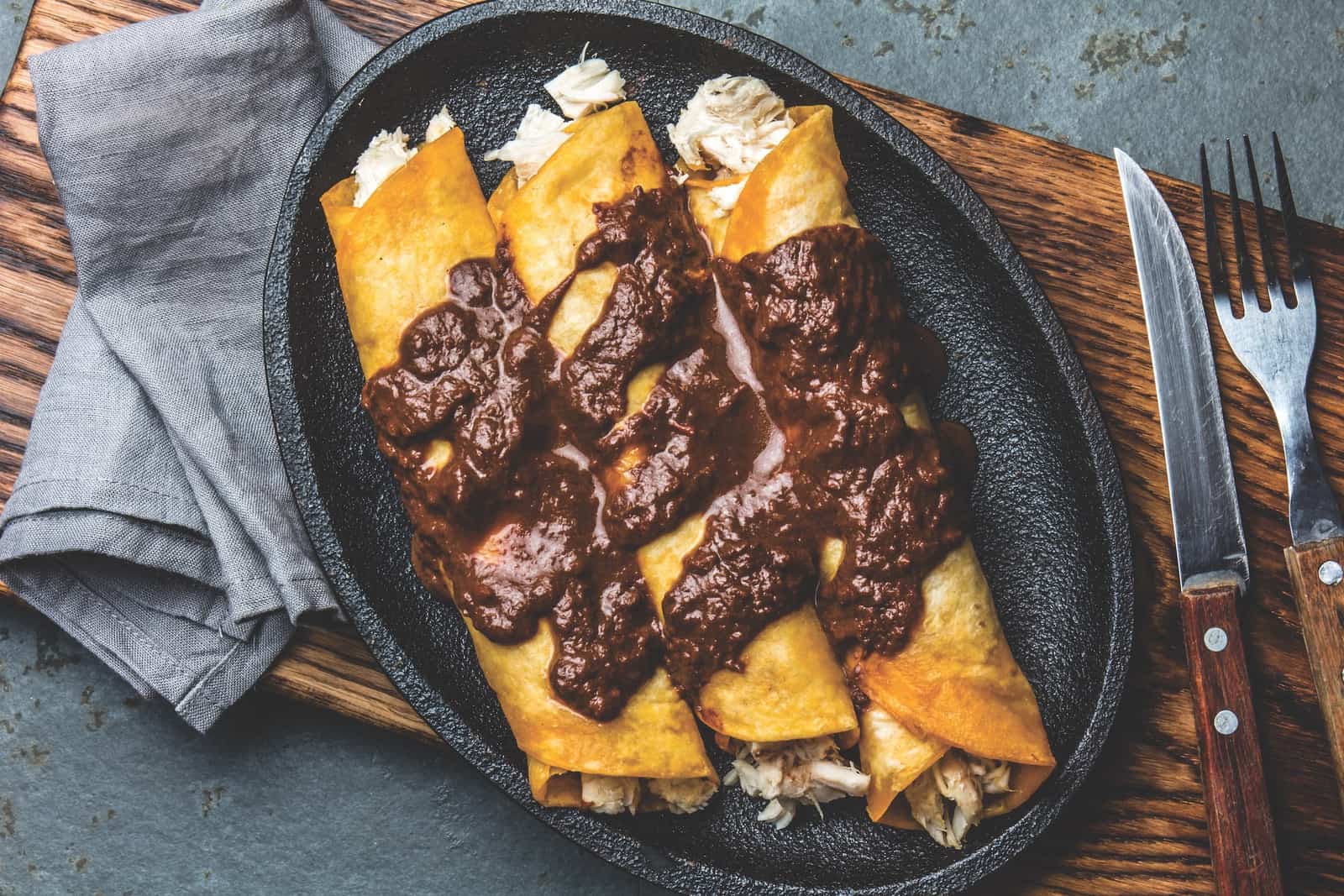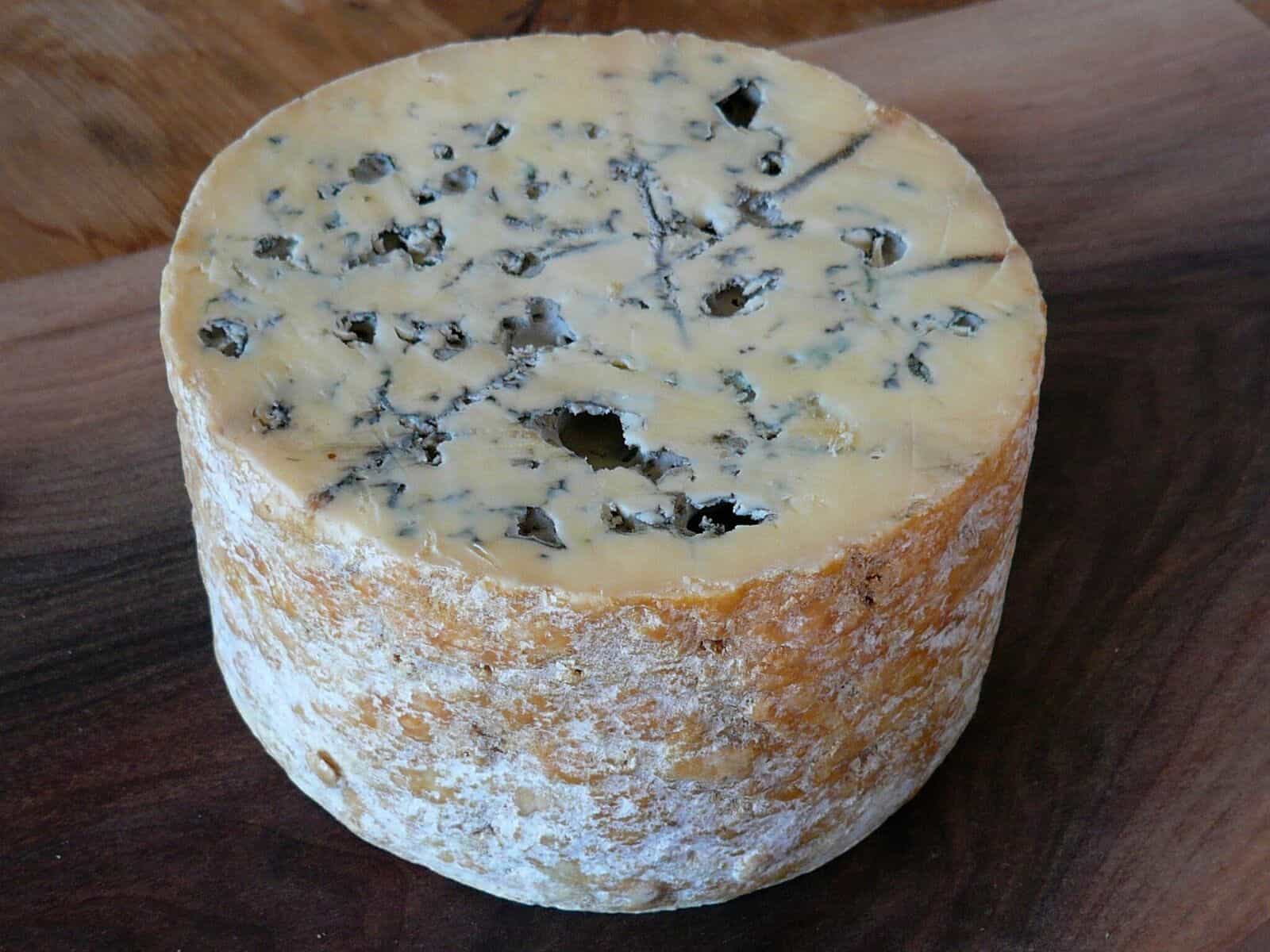
Before watching Enrique Olvera’s episode of Chef’s Table, you may have thought of mole—if you thought of it at all—as “that chocolaty enchilada sauce.” Now, thanks to its growing presence in the media, plus restaurants like Pujol in Mexico City, Guelaguetza in Los Angeles, and Casa Enrique in New York City, even if you don’t know exactly what mole is, you probably know that it exists—and that it’s delicious.
The traditional Mexican sauce varies regionally, but it’s usually made from a combination of nuts, fruits, chiles, and spices. Puebla and Oaxaca both claim the originals: Puebla offers the classic mole poblano, while Oaxaca is “land of the seven moles”: negro, rojo, amarillo, verde, chichilo, coloradito, and mancha manteles. In the US you can buy good versions of the moles below—rojo, negro, and coloradito—from Guelaguetza’s online store. Or, if you’re feeling ambitious, make your own.
But back to the cheese spread. While mole may not be the most typical accompaniment, it is made up of ingredients that pair well with cheese: nuts and fruits. Don’t worry about making it an exact science—it’s all based on play and preference, which makes it infinitely more fun.
Mole Negro
Black moles often contain chocolate, and always contain black chilhuacle chiles. Because they only grow in Oaxaca, the chiles can be hard to find, but may be available at specialty Mexican markets. (If you can’t find them, try Spice Trekkers online.) The sweet, rich, aromatic flavors of mole negro make it easy to pair. Anything with a bit of Alpine sweetness becomes delightfully dessert–like with black mole, while the tobacco notes imparted by the chilhuacle chiles layers nicely with meatier, more mushroomy cheeses, like mild washed rinds.
Milton Creamery Prairie Breeze + mole negro
Cascadia Creamery Sawtooth + mole negro
Mole Rojo
If mole negro is winter, then this earthy, bright mole is autumn; it doesn’t hold the same gravitas, but it’s more versatile and easygoing than its darker cousin. Like mole negro, it requires its own pepper: the chilhuacle rojo chile, which is has a faint hint of anise. Red mole isn’t quite as easy to pair with cheese, but it goes nicely with most flavorful-yet-balanced wheels. Don’t be afraid to pair it with something a bit gamy—the bright, almost flirty piquancy plays well with it.
Caseficio Quattro Portoni Quadrello di Bufala + mole rojo
Jasper Hill Farm Bayley Hazen Blue + mole rojo

Pair Jasper Hill Farm Bayley Hazen Blue with mole rojo.
Mole Coloradito
Translating to “a shade of red” or “on the naughty side,” coloradito is similar to red mole, but with added plantains, which thicken and sweeten the sauce. Lean in to its fruity, toasty, herbaceous, spiced character and it will take you delightful places. With younger goat’s milk cheeses, it becomes reminiscent of a lemon plucked straight from the tree. With brothy, vivacious L’Etivaz, all the wild berry notes of the cheese come straight into the limelight. While coloradito might be the hardest of the three to pair, it’s the most fun when you get it right.
Westfield Farm Capri + mole coloradito
L’Etivaz AOP + mole coloradito



